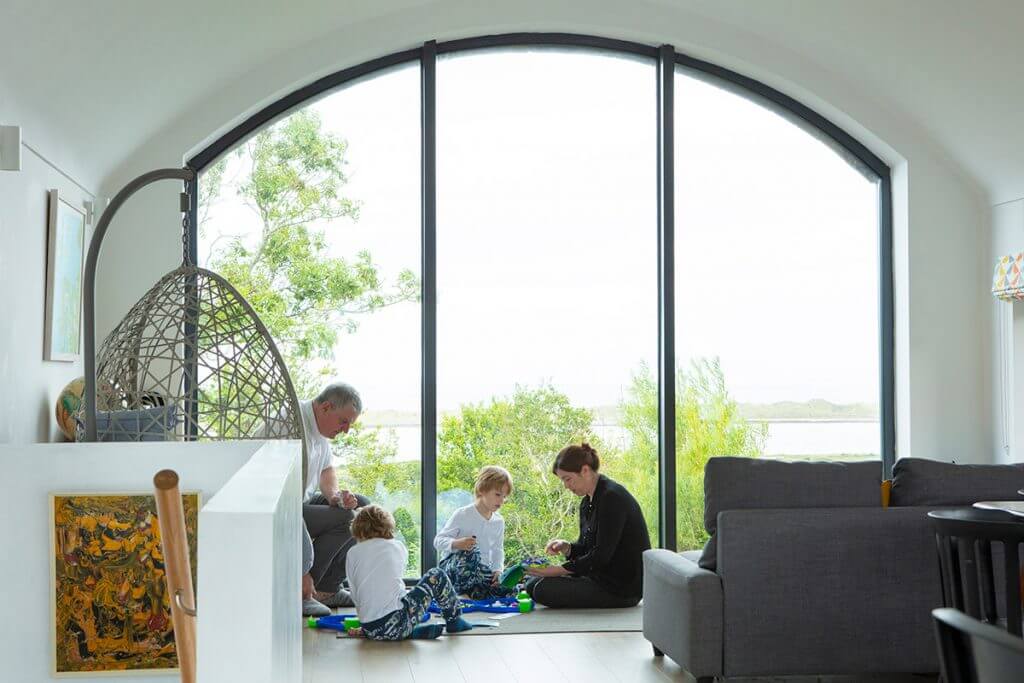When you’re building a new home or extending an existing one, it’s crucial to pay close attention to your window performance. Windows play a vital role in maintaining your home’s energy efficiency and overall comfort. In this guide, we’ll break down the key aspects of window performance, from understanding technical terms to complying with regulations and optimising energy efficiency.
The Importance of Window Performance
Windows are not just openings in your walls; they are essential components that significantly impact your home’s energy efficiency, comfort, and overall performance. To ensure your windows meet the necessary standards, it’s essential to understand various technical parameters and certifications related to window performance.

Glass vs. Window Performance
When assessing window performance, it’s crucial to distinguish between the individual glass and the complete window unit, including the frame. Often, the weakest link in window performance is the frame, especially where it meets the glass. Therefore, it’s essential to evaluate the overall performance of the entire window unit rather than just the glass.
Certification Matters
Before committing to a window supplier, it’s wise to check for certifications that guarantee the performance of your windows. Key certifications to look for include:
- U-values to EN 10077-2: This measures the heat transfer rate through the window.
- Air Permeability to EN 1026: It assesses how airtight the window is.
- Water Tightness to EN1027: This determines how resistant the window is to water infiltration.
- Wind Resistance to EN 12211: It evaluates the window’s ability to withstand wind pressure.
- Security Windows (BS PAS 24): Especially important for ground-level windows, as it certifies resistance to forced entry.
Certifications ensure that the product adheres to specific standards tested by independent entities.

Window Energy Ratings
Modern window performance is often evaluated using Window Energy Ratings, which rank windows from A to G, similar to electrical appliances. Reputable sources for Window Energy Ratings in Ireland include the NSAI Window Energy Performance Scheme (ROI) and Kitemark, the British Fenestration Rating Council. In Northern Ireland (NI), look for FENSA accreditation.
Warranty Considerations
Most window suppliers provide a ten-year guarantee, covering aspects such as the color fastness of the profile. Ensure that the warranty is insurance-backed, which means it remains valid even if the manufacturer or installer faces liquidation. However, if you purchase frames on a supply-only basis, the guarantee may cover the unit but not the installation.
Complying with Regulations
Window performance in Ireland must adhere to specific regulations and standards. Understanding these regulations is crucial when designing your home or extension.

Technical Guidance Documents (ROI) and Technical Booklets (NI)
Refer to the technical guidance documents (ROI) and technical booklets (NI) to understand the regulations governing window performance. These documents outline parameters like the ratio of wall space to windows, which must be carefully balanced for energy efficiency while preserving views and natural light.
Fire Safety and Ventilation
- All bedrooms must have an openable window of at least 500mm by 800mm for fire safety, allowing occupants to escape and firefighters to enter.
- Windows positioned lower than 850mm from the ground or an upstairs floor must feature toughened or laminated safety glass.
- Bathrooms and shower rooms require vented or openable windows for adequate ventilation.
In ROI, an architectural designer and building energy assessor will ensure compliance with these regulations, including pre-construction energy calculations for building regulation adherence.
In NI, Building Control will review your plans and highlight any regulation-related issues. For example, no more than 25% of your floor area can be occupied by windows, necessitating trade-offs for energy conservation.

Understanding Thermal Performance
Thermal performance is a critical aspect of window performance, primarily assessed using U-values. The U-value measures the rate at which heat passes through the window, either from inside to outside or vice versa. A lower U-value indicates better thermal performance.
Factors Affecting U-values
- Glass: High-performance glass with low-emissivity (low-e) coatings significantly improves thermal performance.
- Frame: The frame material, sealing, and thermal breaks also impact U-values.
- Overall U-value: The window’s U-value is influenced by the proportion of frame to glass, making each window unit unique.
To comply with energy regulations, consider whole window U-values, which tend to be higher than pane-only values. Consult your supplier for certified complete window U-values.

Triple Glazing for Superior Insulation
For optimal energy efficiency, consider triple glazing with gas filling and low-e coatings. While more expensive, it offers excellent thermal performance. However, it reduces the amount of light entering your home.
Proper window installation, including insulation around the window, is essential to maximise U-value benefits.
Solar Gain and Overheating
Solar gain refers to the heat and light admitted through windows. While solar gain can help offset heat losses, it can also lead to overheating in summer. Proper management of solar gain is essential for comfort and energy efficiency.
Mitigating Overheating
- Consider UV film or high-tech glazing to reduce UV rays and overheating.
- Shading devices like brise soleils and effective ventilation can help control overheating.
- Energy calculations should include mitigation for overheating, accounting for shading devices and ventilation.

Other Technical Data
Air Leakage
For a well-sealed house, aim for Class 4 or better air leakage, ensuring minimal drafts and heat loss.
G-Factor
The G-factor indicates the amount of solar gain and is usually given as a percentage. It helps determine how much of your space heating can be provided by the sun in colder months. Double glazing provides more solar gain than triple glazing.
Light Transmittance
Light transmittance measures how much daylight a window allows in. Triple glazing transmits about 70% of light, while double glazing transmits around 90%. However, when including the frame, these percentages decrease.

Considering Exposed Areas
In coastal locations, corrosion can be a concern, particularly for aluminum frames. Your choice of materials, including their appearance, performance, and budget, should align with your home’s design and location. Consider thicker profiles for enhanced performance and explore guarantees related to colour retention.
Understanding window performance is essential when building or extending your home. Properly selected and installed windows can significantly impact energy efficiency, comfort, and overall satisfaction. By considering U-values, solar gain, regulations, and other technical aspects, you can make informed decisions that enhance the performance of your windows, making your home more comfortable and energy-efficient for years to come.




